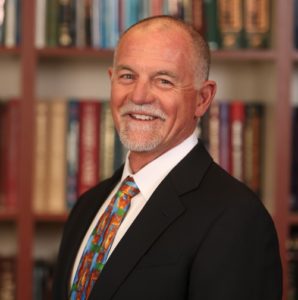 There are many stages of the body’s healing process. The faster the process begins, the better the odds of the injured area recovering fully, with little or no ongoing pain or issues.
There are many stages of the body’s healing process. The faster the process begins, the better the odds of the injured area recovering fully, with little or no ongoing pain or issues.
One of the newest and most innovative areas of medicine – biologics – involves using the body’s own natural ability to heal itself. In simple terms, biologics uses a person’s own cells to try to help repair other cells, rather than using a substance that is artificial.
One of the most successful biologic treatment options is Platelet Rich Plasma (PRP) Therapy. PRP uses a person’s own plasma (a component of the blood) to activate and boost the healing process in injured tendons, ligaments, muscles and joints. The high concentration of platelets in the plasma – five to seven times more than the same amount of whole blood – activates the further production of more platelets and other healing factors in the area.
PRP is a concentrated source of cellular and growth factors, both of which play a significant role in the healing process. Several clinical studies have demonstrated that PRP injections have improved function and decreased pain to various conditions, including, but not limited to, elbow, wrist, shoulder, hip, knee and ankle tendonosis (deterioration of collagen).
Early work is also showing promise for osteoarthritis. A study by researchers from Hospital for Special Surgery in New York, has shown that PRP holds great promise for treating patients with knee osteoarthritis. The treatment improved pain and function and appeared to delay the progression of osteoarthritis (which is a progressive disease) in 73 percent of patients receiving the treatment.
Q: How long has PRP been used?
A: The therapy has been used for more than 20 years in numerous surgical fields, including plastic surgery and orthopedic surgery.
Q: What are the benefits of PRP?
A: The platelet-rich injections can enhance bone grafting (joint and disc replacement), accelerate wound healing, reduce the risk of infection following a surgical procedure, lessen joint pain, heal soft tissue injuries (tendons, ligaments, muscles) and decrease lower back disc degeneration and arthritis. It is also used to increase healing following plastic surgery procedures.
Q: How is the plasma taken from the blood?
A: Blood is simply taken from the body just like when a blood draw is needed for a blood test. Not much blood is needed; maybe one or two vials is all.
Q: What happens after the blood is removed from the body?
A: After the blood is removed, it is put into a machine called a centrifuge that spins the blood at a high speed causing the blood components to separate. The plasma is placed in a syringe for use in the PCP therapy. The remaining blood components are properly discarded.
Q: Where and how is the plasma injected?
A: Ultrasound may be needed to pinpoint the exact location for the injection. After topically numbing the area with a local anesthesia, a needle is attached to a syringe and inserted into the injured tissue. Sometimes, there is more than one injection site, but sites will be close to each other.
Q: How does PRP work?
A: The highly-concentrated platelet-rich plasma increases cell proliferation, which, in turn, increases the number of cells in the area that specialize in restoring and healing damaged tissues. PRP also facilitates the regeneration of collagen which is the primary component of fascia, cartilage, ligaments, tendons, bone and skin.
Q: Is the procedure painful?
A: There may be an achy soreness in the area of the injection that may last for hours or days depending on the location and a person’s own response. The soreness is the body’s response to the healing process that was initiated and may be considered “good pain” (extreme pain should be reported immediately). In most cases, icing the area and medications such as Tylenol will decrease the ache. Medications that are anti-inflammatory such as Ibuprofen or Naproxen or blood-thinning such as Aspirin must be avoided as the body’s healing process includes inflammation.
Q: How much time is needed following an injection until normal activities can resume?
A: Some rest is needed immediately following the procedure, followed by a progressive stretching and strengthening program. Most people can resume normal day-to-day activities such as walking and light exercise the same day or the next day. Strenuous lifting or high-intensity exercise should be avoided for several days after the injection.
Q: How many injections are needed in the injured area?
A: Because the regeneration of collagen takes four to six months, multiple injections may be needed, depending on the injury and a person’s response to the therapy. On average, three injections at four- to six-week intervals are needed.
Q: Does each injection require another blood draw?
A: Yes, in most cases except when larger amounts of plasma are frozen for future use.
Q: What are the risks of infection or rejection of the platelets?
A: Infection risks are low because the procedure is an injection rather than an incision and is performed in a sterile manner. Rejection of the plasma is not a consideration because the person’s own blood is used rather than a pharmaceutical product. FBN
By Timothy Bonatus, D.O.
Dr. Timothy Bonatus is an orthopaedic surgeon at Northern Arizona Orthopaedic and practices in the Arthritis and Fracture Care Center. He specializes in a General Orthopaedics, Trauma, Fracture Care and Arthroplasty Surgery of the Hip and Knee. He is one of many surgeons currently offering PRP inside the Summit Center.





